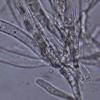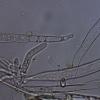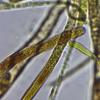
18-12-2025 21:17
Pol DebaenstThe identification took me to Byssonectria deformi

15-12-2025 07:09
 Danny Newman
Danny Newman
indet. Rutstroemiaceae sp. on unk. fallen leavesMc

19-12-2025 10:10
Patrice TANCHAUDBonjour, rûˋcolte rûˋalisûˋe en milieu dunaire, a

18-12-2025 17:23
 Bruno Couûˋ
Bruno Couûˋ
Bonjour,je serais heureux d'avoir votre avis sur c

18-12-2025 18:07
Margot en Geert VullingsThese plumes were found on rotten wood.They strong

17-12-2025 18:35
 Michel Hairaud
Michel Hairaud
Bonjour û tous/Hi to everyoneô I am passing along

21-11-2025 10:47
 FranûÏois Frelûˋchoux
FranûÏois Frelûˋchoux
Bonjour,Peut-ûˆtre Mollisia palustris ?Trouvûˋe su

15-12-2025 15:48
 Danny Newman
Danny Newman
Melanospora cf. lagenaria on old, rotting, fallen

15-12-2025 15:54
 Johan Boonefaes
Johan Boonefaes
Unknown anamorph found on the ground in coastal sa

15-12-2025 21:11
 Hardware Tony
Hardware Tony
Small clavate hairs, negative croziers and IKI bb
I send you a Word document with my find on juncus.
Is my determination correct? I have my doubts. In Breitenbach(vol. 1 p. 146) it should be stalkless but taking into account the taxonomic corrections the determination is correct! Ellis and Ellis p.498 confirms my conclusion, so am I right or am I wrong.
Thanks in advance, kind regards,
FranûÏois Bartholomeeusen

R. calopus is usually stalked. Your photo of an apically opened ascus in IKI shows a distinct bluing. Now important would be the ascus base. Did you see young asci emerging from the basal cells? Are there croziers or not?
There is a quite sharp delimitation between Poaceae (with croziers) and Cyperaceae/Juncaceae (without). From the substrate yours should be R. paludosa (or R. henningsiana which seems to be the older name).
There is a recent paper on this, by F. Pancorbo, Miguel-Angel Ribes et al. 2013.
Estudio micobiota ecosistema dunares Peninsula y Baleares I.
Bol. Soc. Micol. Madrid 37: 175-201
See also here
http://www.ascofrance.fr/search_forum/22183
Zotto


I am sending you the paper.
Good luck.
It is so nice to have friends...so far away... Many thanks for your help!
I revisited the site and with some difficulty discovered that the substrate is not Juncus effusus but Eleocharis palustris(Cyperaceae).
According to Bernard Declerck it's the first time that Rutstroemia paludosa was found in Flanders.
Kind regards,
FranûÏois

I checked the collection received from FranûÏois. The asci have indeed no croziers, onlyô a basal bent protuberance.
I am interested in receiving the Pancorbo & al. paper too. Thanks in advance.
Best regards,
Bernard

Zotto
 GrasstromakelkjeAF-0001.docx
GrasstromakelkjeAF-0001.docx

